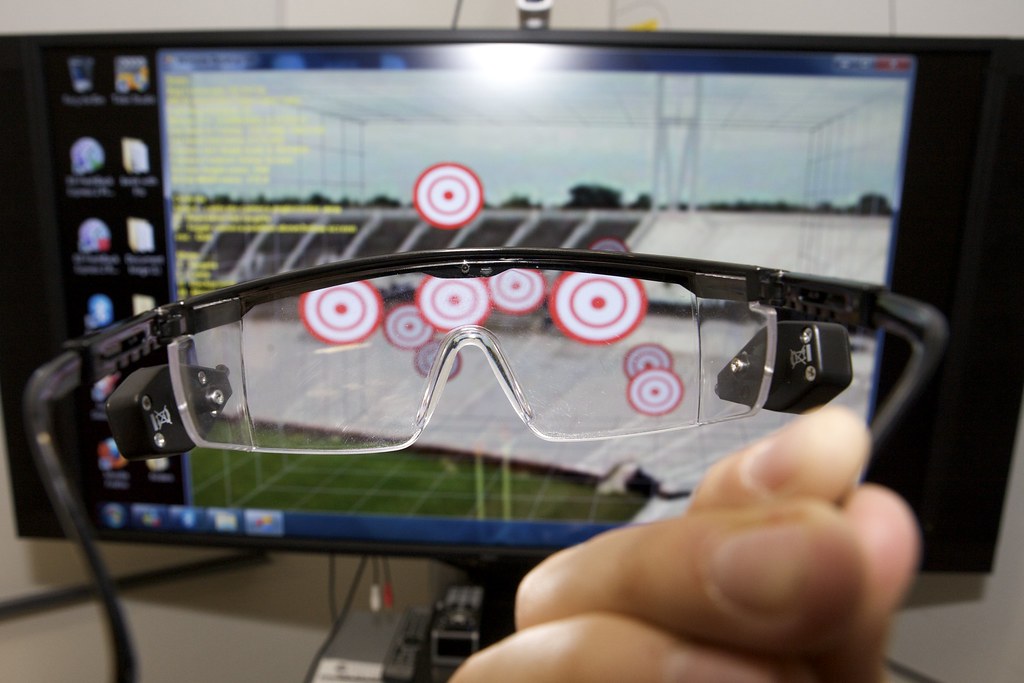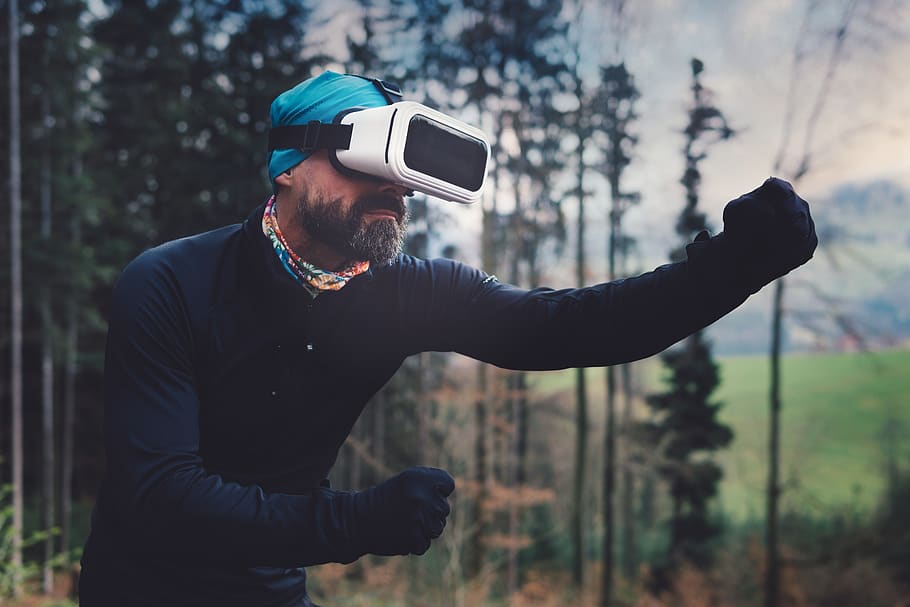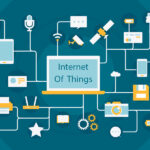Wearable technology refers to electronic devices that can be worn on the body as accessories or embedded in clothing. These devices are equipped with sensors, software, and connectivity features that enable them to collect and exchange data with other devices and networks. Wearables have gained significant popularity in recent years due to their ability to enhance various aspects of our daily lives. Here are some key aspects of wearable technology:

Table of Contents
Introduction
Wearable technology, once a futuristic concept, has seamlessly integrated into our daily lives, changing the way we interact with the digital world. From smartwatches to fitness trackers, these innovative gadgets offer a glimpse into the future of technology. Let’s explore the evolution, types, benefits, challenges, and future trends of wearable tech.
Evolution of Wearable Tech
Wearable technology has undergone a remarkable evolution, transforming from a niche concept into an integral part of our daily lives. The journey of wearables began with humble fitness trackers and has now reached the sophistication of smartwatches and augmented reality devices.
In the early days, wearables were primarily focused on monitoring basic health metrics. The introduction of fitness trackers marked a significant step forward, allowing users to track their steps, calories burned, and sleep patterns. These devices quickly gained popularity, especially among health-conscious individuals.
As technology advanced, so did wearables. The emergence of smartwatches revolutionized the market, combining health tracking with the functionality of a miniature smartphone. Smartwatches became more than just timepieces; they became personal assistants, capable of delivering notifications, managing schedules, and even making calls.
Augmented reality (AR) devices added another layer to the evolution of wearables. Google Glass, for instance, introduced the concept of overlaying digital information onto the real world. Although it faced challenges and limited adoption initially, it laid the foundation for the integration of AR into various industries.
The continuous miniaturization of components and improvements in battery life contributed to the development of wearables that seamlessly blend with everyday clothing. Smart clothing, embedded with sensors and technology, emerged, offering features like biometric monitoring and even heating elements.
Hearables, another category of wearables, brought intelligence to our ears. These devices not only delivered high-quality audio but also incorporated fitness tracking and real-time language translation.
As wearables evolved, they became more than just gadgets; they became companions. Not only have technologies advanced, but wearables have become more and more integrated into our daily lives, marking an evolution in their own right.
Today, we stand at a point where wearables have become an integral part of our lives, offering a diverse range of features and functionalities. From monitoring our health to enhancing our productivity, the evolution of wearable technology continues to shape the way we live and interact with the digital world.
Types of Wearable Technology

- Smartwatches
- The epitome of wearable tech, smartwatches blend style with functionality, offering features like fitness tracking, messaging, and app integration.
- Fitness Trackers
- Specifically designed for health enthusiasts, fitness trackers monitor activities, heart rate, and sleep patterns, promoting a healthier lifestyle.
- Augmented Reality (AR) Devices
- AR devices like Google Glass overlay digital information onto the real world, opening up possibilities in various fields, including healthcare and education.
- Smart Clothing
- Integrating technology into fabrics, smart clothing monitors biometrics and offers convenience through features like heating elements and LED displays.
- Hearables
- These include smart earbuds that not only deliver high-quality audio but also track fitness metrics and provide real-time language translation.
Benefits of Wearable Technology
Wearable technology has ushered in a new era of convenience and connectivity, offering a myriad of benefits that extend beyond mere gadgetry. These innovative devices, ranging from smartwatches to fitness trackers, have become integral companions in our daily lives.

Wearable tech brings several advantages to users:
- Health and Fitness Tracking
- Users can monitor their physical activity, heart rate, and sleep patterns, promoting a proactive approach to health.
- Convenience in Daily Life
- Notifications, navigation, and quick access to information contribute to increased convenience in our daily routines.
- Enhanced Productivity
- Smartwatches, in particular, allow users to manage tasks, respond to messages, and stay organized on the go, boosting productivity.
Challenges and Concerns
However, the rise of wearable technology is not without its challenges.
- Privacy and Security Issues
- One of the primary challenges facing wearable technology is the potential compromise of privacy and security. As wearables continuously collect and store personal data, concerns arise regarding how this information is handled. Users may worry about the risk of data breaches or unauthorized access, emphasizing the importance of robust security measures.
- Health Concerns
- While wearables aim to enhance health monitoring, there are legitimate concerns about the potential health impact on users. Prolonged use of devices with screens, like smartwatches, can contribute to issues such as eye strain and disrupted sleep patterns. Striking a balance between the benefits of health tracking and minimizing potential health risks becomes crucial.
- Social Implications
- Wearable technology’s constant connectivity may have social repercussions. There is a growing concern that the prevalence of these devices may lead to decreased face-to-face interactions and a potential over-reliance on technology for communication. Striking a balance between staying connected and maintaining authentic social relationships becomes a societal challenge.
Addressing these challenges requires a collaborative effort from manufacturers, policymakers, and users. The responsible development of wearable technology involves implementing strong privacy measures, considering the health impacts of prolonged use, and promoting healthy social dynamics in an increasingly connected world.
Future Trends in Wearable Tech
Looking ahead, we can anticipate exciting developments in wearable technology:
- Integration with Artificial Intelligence
- The future of wearable technology is poised to be significantly shaped by the integration of artificial intelligence (AI). Wearable devices will increasingly leverage AI algorithms to provide more personalized and intelligent user experiences. This could involve smarter health insights, predictive notifications, and enhanced contextual awareness, making wearables more intuitive and adaptive to individual needs.
- Advancements in Materials and Design
- As technology progresses, we can expect significant advancements in the materials used in wearable devices and their overall design. Innovations in flexible and durable materials will lead to more comfortable and stylish wearables. This not only enhances the user experience but also promotes the seamless integration of technology into our daily lives, making wearables more aesthetically pleasing and functional.
- Expanded Use Cases
- The future will witness wearables finding applications in a broader range of industries and activities. Beyond health and fitness tracking, wearables are likely to become more versatile, impacting areas such as gaming, education, and professional settings. The potential integration of augmented reality (AR) into everyday experiences may further broaden the use cases of wearables, offering new possibilities in entertainment, education, and beyond.
These future trends represent the continued evolution of wearable technology, promising more sophisticated and integrated devices. As technology enthusiasts and consumers look forward to these developments, it’s evident that wearables will play an even more integral role in shaping our interaction with the digital world in the years to come.
Popular Brands and Models
- Apple Watch Series
- Renowned for its sleek design and advanced features, the Apple Watch Series remains a leader in the smartwatch market.
- Fitbit
- A pioneer in fitness tracking, Fitbit offers a range of devices catering to different user needs.
- Google Glass
- Google Glass, though initially met with skepticism, has paved the way for AR in various industries.
- Garmin
- Known for its GPS technology, Garmin’s smartwatches are favored by outdoor enthusiasts and athletes.
How to Choose the Right Wearable Tech
Consider these factors when selecting a wearable device:
- Purpose and Use Case
- Before diving into the world of wearables, it’s essential to define your specific needs. Consider the primary purpose of the device—whether it’s for fitness tracking, notifications, or a combination of features. Understanding your use case will help you narrow down the options and find a wearable that aligns with your lifestyle.
- Compatibility with Devices
- Ensure that the wearable device seamlessly integrates with your existing devices and operating systems. Check for compatibility with your smartphone, tablet, or other gadgets. A smooth connection ensures that you can maximize the features of your wearable without facing compatibility issues.
- Design and Comfort
- Since wearables are accessories that you’ll likely wear throughout the day, prioritize comfort and aesthetics. Look for a design that suits your style and preferences. Consider factors such as the material of the band, the weight of the device, and whether it feels comfortable during various activities. A wearable that feels good on your wrist is more likely to become a consistent part of your daily routine.
User Stories and Experiences
- Success Stories
- Numerous users credit wearables for significant lifestyle changes, from weight loss to improved mental well-being.
- Challenges Faced
- Some users report challenges like inconsistent accuracy in fitness tracking or discomfort during prolonged use.
Impact on Society
- Positive Contributions
- Wearables contribute to a healthier, more connected society, fostering awareness and proactive health management.
- Negative Impacts
- Concerns about privacy and over-reliance on technology highlight potential negative impacts on societal dynamics.
The Future of Wearable Technology
As technology continues to evolve, wearables will become even more integrated into our lives. Anticipate:
Innovations on the Horizon
The future of wearable technology holds promising innovations that could reshape the industry. Advancements in flexible display technology may lead to wearables with screens that can bend and conform to the contours of the human body. This innovation opens up possibilities for more comfortable and customizable designs, allowing wearables to blend seamlessly into our daily lives.
Biometric authentication is another area poised for growth. Future wearables might incorporate more sophisticated biometric features, such as fingerprint scanning, iris recognition, or even advanced facial recognition. These enhancements not only bolster security but also streamline user interactions with the device.
Anticipated Developments
Expect significant strides in energy efficiency. The future will likely see wearable devices with longer battery life, reducing the need for frequent charging. This improvement addresses a common concern among users and enhances the overall convenience and reliability of wearables.
Moreover, the integration of advanced sensors could expand the capabilities of wearables. For instance, sensors capable of monitoring additional health parameters, environmental factors, or even emotional states could provide users with more comprehensive insights into their well-being.
As wearables continue to evolve, we can anticipate a convergence of technologies. Wearables might seamlessly integrate with other smart devices, creating a more interconnected digital ecosystem. This interconnectedness could lead to enhanced user experiences, with wearables acting as central hubs for managing various aspects of our digital lives.
The future of wearable technology is exciting, promising more than just incremental improvements. From flexible displays to advanced biometrics and prolonged battery life, the coming years will likely see wearables become even more integral to our daily routines, offering innovative features that enhance both convenience and functionality.
Conclusion
Wearable technology has undeniably transformed the way we interact with the digital world, offering convenience, health insights, and a glimpse into the future. As we embrace these innovations, it’s crucial to navigate the challenges responsibly, ensuring a balance between technological advancement and societal well-being.
For latest smartwatch, click here
FAQs
- Are wearables safe for long-term use?
- While generally safe, prolonged use may have health implications. It’s essential to take breaks and prioritize eye health.
- How do wearables impact privacy?
- Wearables collect personal data, raising concerns. Users should be mindful of privacy settings and opt for devices with robust security features.
- Can wearables replace traditional healthcare monitoring?
- While wearables offer valuable insights, they complement rather than replace traditional healthcare monitoring.
- What sets Apple Watch apart from other smartwatches?
- The Apple Watch excels in design, ecosystem integration, and a wide range of health and fitness features, setting it apart in the market.
- How can users mitigate privacy concerns with wearables?
- Users can safeguard their privacy by regularly reviewing and adjusting device settings, limiting data sharing, and staying informed about security updates.










1 thought on “Wearable Technology: A Technological Revolution on Our Wrists”